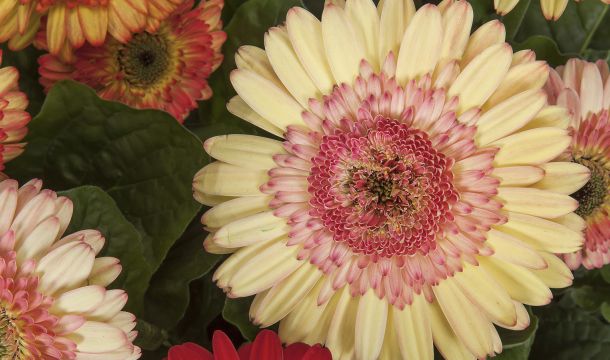Summer Poinsettias
December 26th. Poinsettias. Perfectly good, fully paid, yet unwanted. Taking them to the trash is so painful. Well, what if you took all those extra plants and mixed them into the shade displays? Just keep them like houseplants over the winter, then plant them among the annuals and perennials under some of the trees. Here in Connecticut I move mine outdoors when the daffodils are starting to pass.
It turns out that if you do add poinsettias to your shade garden, you surprise visitors strolling by the plantings. It always generates a conversation, sometimes an excited one, when folks see familiar plants in an unfamiliar place. ‘Christmas Beauty’ is a bright shock of red, ‘Winter Rose’ has scrunchies for bracts, ‘Tapestry’ adds variegated leaves, and the mysterious Princettias never cease to amaze. Many people are delighted by the discovery that, yes, poinsettias do garden well. How cool is that?
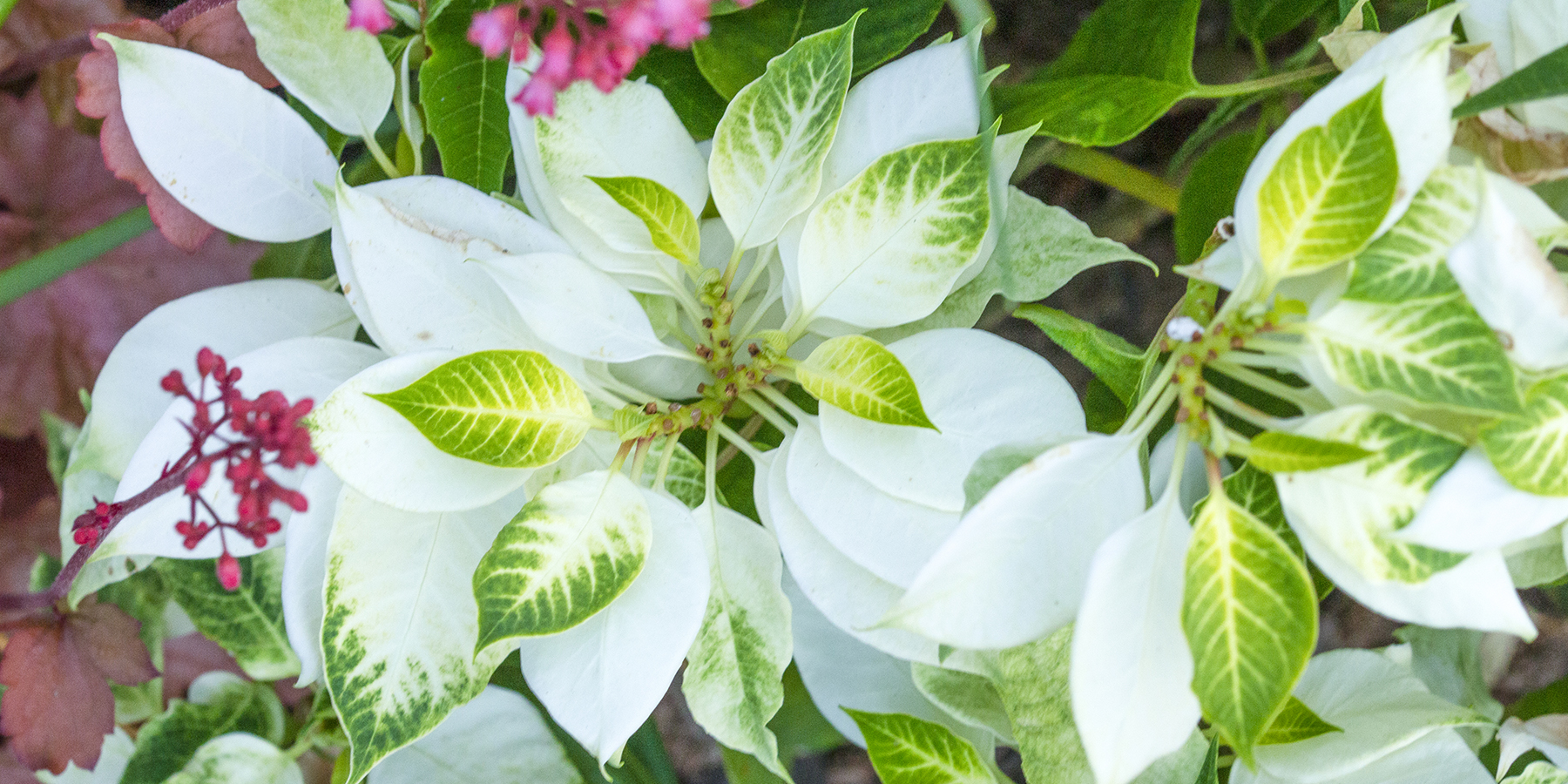
A June display of Princettia ‘Pure White’s’ star-like foliage next to Heuchera ‘Apricot’.
Building Your Surprise Display
Everybody, even industry professionals, is surprised that you can get away with such a scheme. Sales reps usually advise garden centers to throw out leftover poinsettias. This advice makes sense because reblooming the plants for next season is a huge pain. However, garden poinsettias have a different goal: keep the existing bracts as good spring color. At this point, you can practically see the exclamation points over the phone: “You can do that?!” No emoji is necessary.
To convert your excess poinsettias into garden plants, keep them as houseplants over the winter. The bracts last a long time on healthy plants if you don’t push the new growth. Bracts color up because of long winter nights, and you will have generous inventory on those. Also, keep them away from direct sunlight (true in the house and the garden) because direct sunlight encourages bracts to fade and new greenery to kick into gear. About April, transition to a cool house (50s to 60s) if you haven’t done so already. If you harden them off, the plants will face the raw weather better.
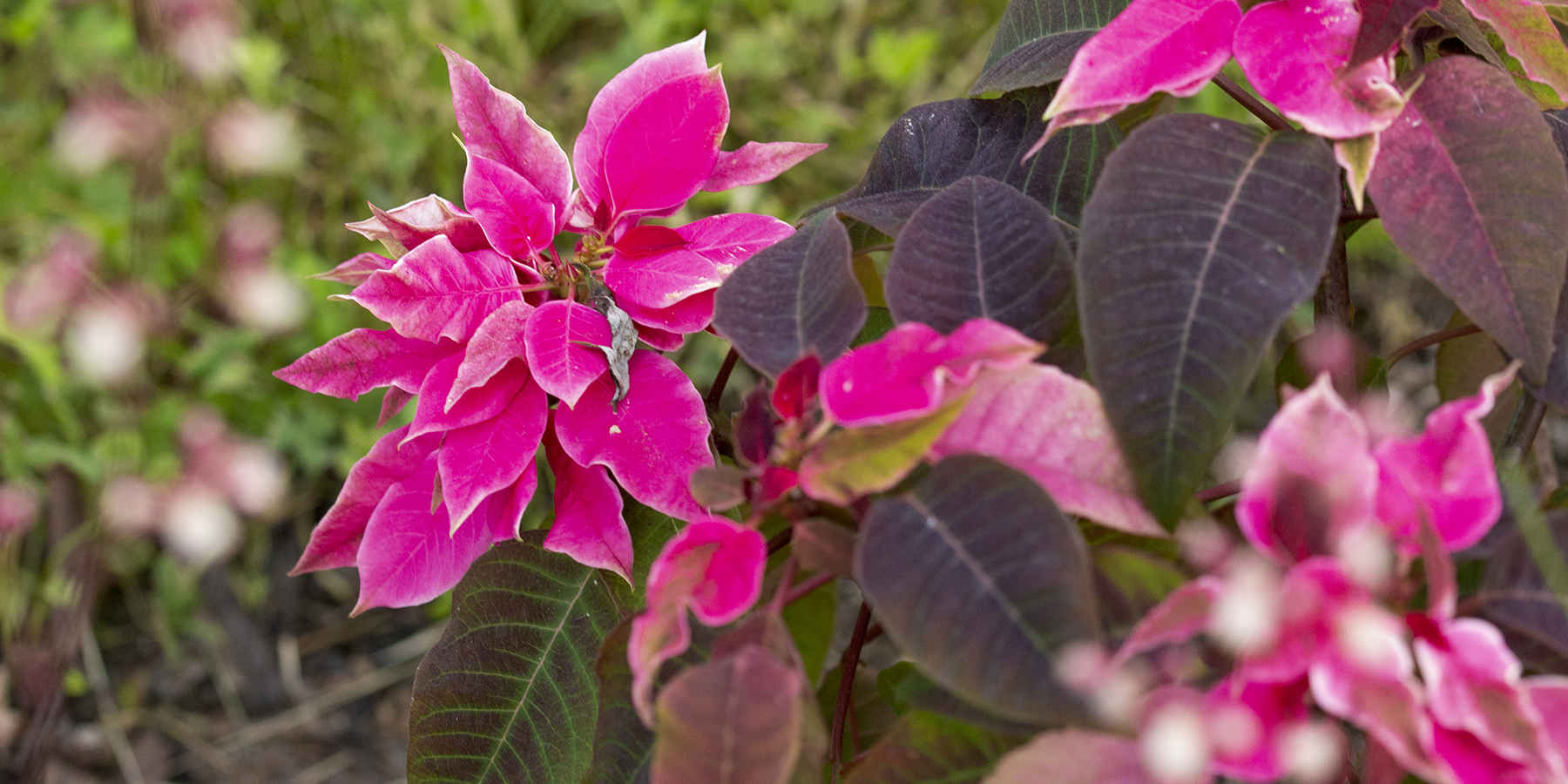
A May display of Princettia Queen Pink grows out with deeply bronze leaves underneath the red bracts. The youngest bracts have a white margin on the edge.
Spring and Summer Performance
Despite their tropical and temperamental reputation, I find that poinsettias handle garden settings just like any other garden annual. Cold nights are no problem, as long as frost doesn’t hit (more like nemesias and less like Titan vincas). Regular water isn’t a problem, either. I keep mine in natural rain, including under tree settings that are notoriously dry. Poinsettias aren’t xeriscaping candidates, but they don’t mind a tough stretch of dry days. They handle the same rainy weather as hostas, heucheras and tuberous begonias.
In fact, in a very un-tropical way their Achilles’s heel is direct sun, not cold or water. The poinsettias I’ve killed have always been the ones I planted in full sun, and the leaves crisped up pretty quickly. They can handle semi-sun gardens, but the overhead sun does encourage the green to reappear sooner rather than later. Older leaves darken into bronze and the bright green poinsettia leaves reach over top.
Their best performance occurs in full shade where the Christmas color continues into the summer. Think of gardens under trees where the grass doesn’t grow. Poinsettia’s bright colors are highly valuable because bright reds or pinks are so rare under there. They also do well as tuck-in plants among taller perennials and shrubs where the overarching plants shade the ones underneath them. This is my favorite use of poinsettias—unexpected finds like Easter eggs.
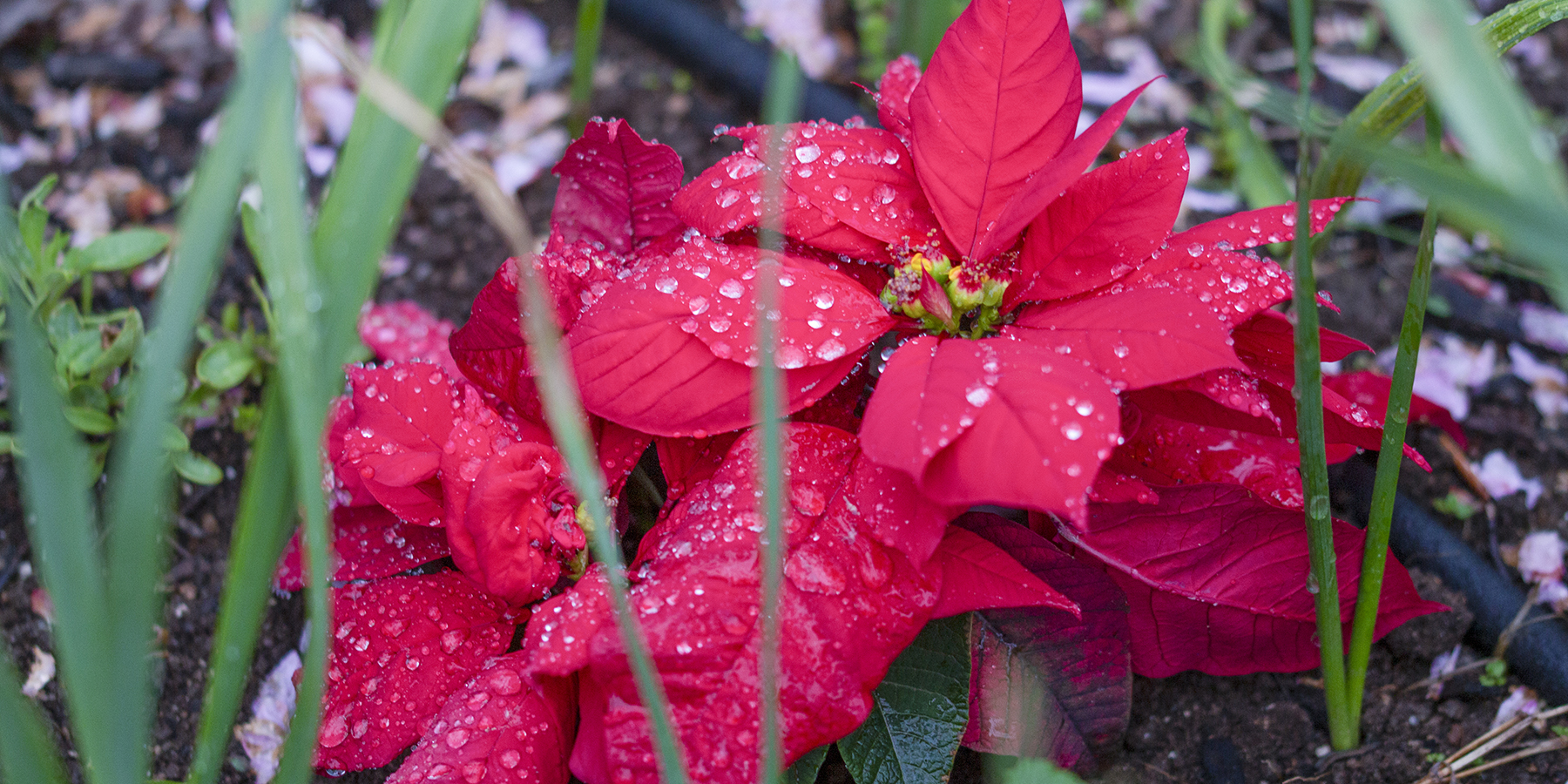 Christmas Beauty ‘Red’ was planted as the daffodils ripened—it handled cool temperatures well but it was hardened first.
Christmas Beauty ‘Red’ was planted as the daffodils ripened—it handled cool temperatures well but it was hardened first.
Zag When Others Zig
As a surprise and delight effort, the summer poinsettia is best used by a garden center that likes to unveil unusual concepts to their neighborhood. It’s also a display idea rather than a program one because, to the best of my knowledge, no one supplies poinsettia stock as a spring or summer product. So as a sellable idea, inventory is pinched to what you can crib from the leftover Christmas market, but as a garden display idea it has pretty good merit as customer butter.
Now, don’t take my experience as the last word. It’s mostly a personal tale backed up by a few curious growers who put some plants out on their decks to see what would happen. Their experiences shadow mine, but I’ve just started this journey myself. Breeders tell me that different varieties have different temperature and water tolerances, so your mileage may vary.
This isn’t to say that the garden poinsettia is an original idea, either. A few miles away, I found a deli owner who likes to buy the big ones and plant them outdoors as an impressive display to his entrance. He’s done so for nearly a decade and boy, was he proud when I interviewed him. So if you wander across some garden poinsettias this spring, or if you give this idea a shot, give me a call. I am a curious bear.
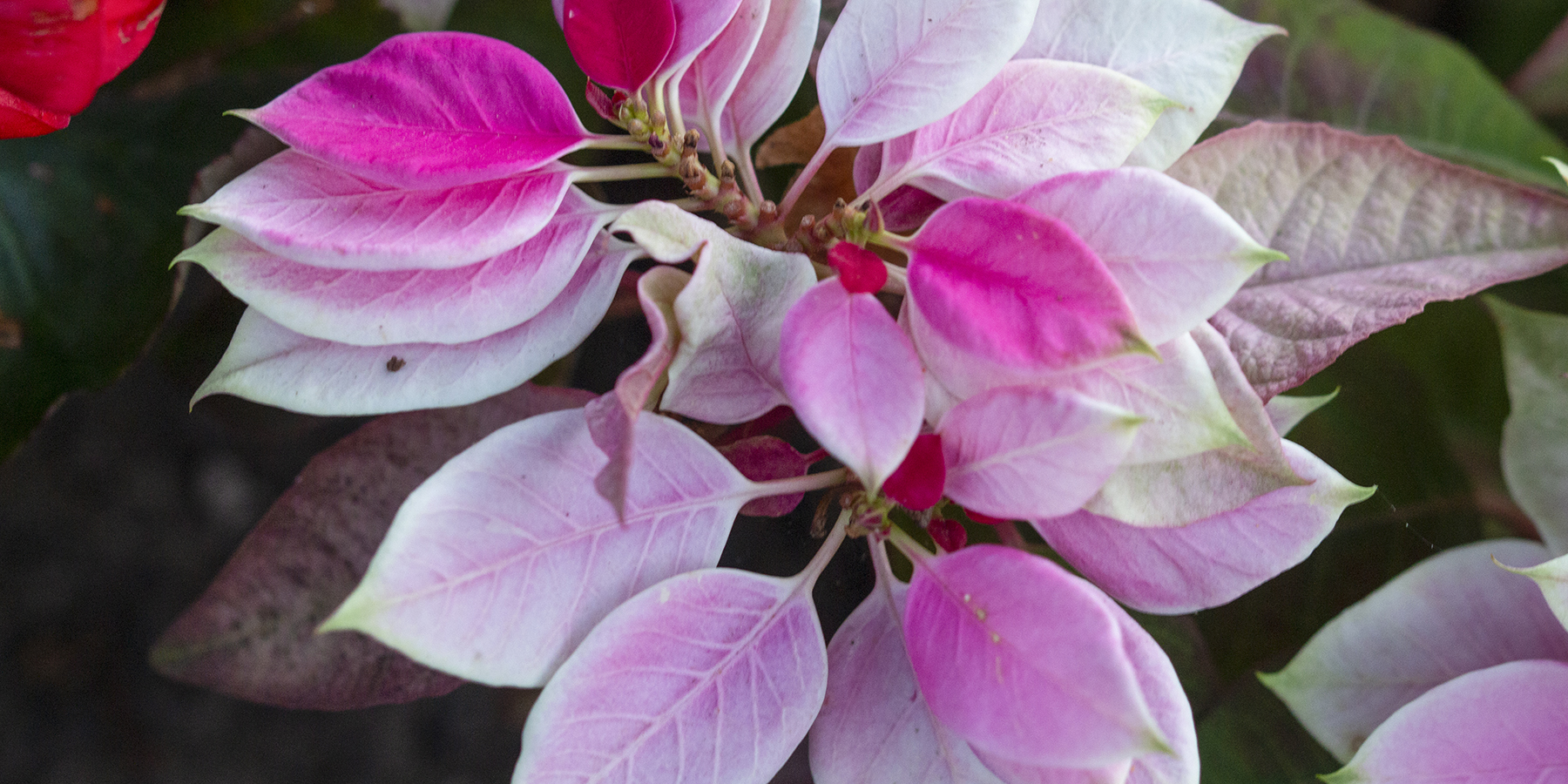
Princettia Light Pink is my favorite due to its wide range of pinks, blushes and whites swirling on the same bract as it grows out.
Popular Articles
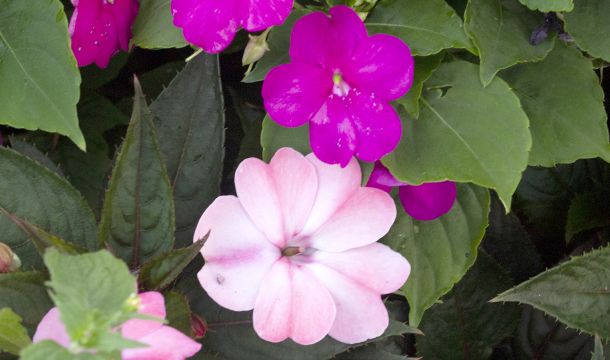
The Splitting of Impatiens
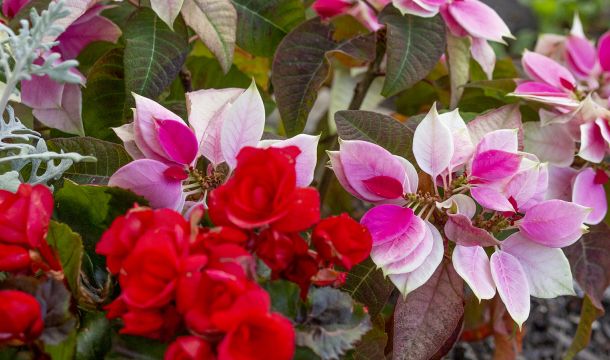
Spotlight on Princettias
